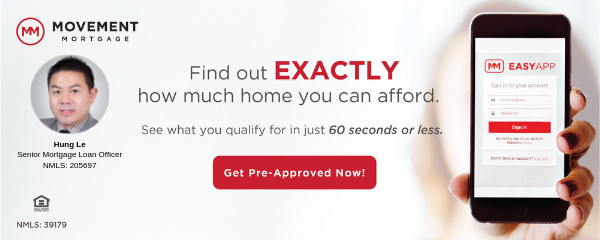Are you starting to outgrow your current home? Are you thinking it’s time to downsize? That’s awesome! But let’s talk about how to transition from one home to another.
When you think you found “the one,” it can be tempting to just jump on the opportunity before selling your current home. So the question becomes, do you go ahead and buy the home, or do you wait and sell first? In a perfect world, you could buy and sell at the same time, but this isn’t always possible. So, let’s take a look at our options.
Main challenges of buying before selling
When you buy a new home before selling your current one, you will be taking on two mortgages, and it may be difficult to qualify for the second loan. This difficulty is mainly due to your debt-to-income (DTI) ratio and your down payment.
Since your current mortgage affects your DTI ratio, taking on another mortgage will affect it, too. You will likely need a significant amount of income to afford both mortgages and keep that DTI ratio balanced.
Also, when you’re still the owner of your current home, your equity may be tied up there. This means that you might not have as much cash on hand to use for the down payment until you sell your current home.
Disadvantages of selling before buying
Just like there are pros and cons to buying first, that’s true of selling first, too. In a seller’s market, buying a home can be very competitive, so you’ll want to be able to move quickly. Having to wait to sell your current home could slow you down and keep you from getting that new home you want.
You may also end up without a place to live for a temporary period. If there is a period between selling your current home to someone else and finding that new place to call home, you could be left couch surfing or staying with family for a while.
The market can make things tricky, too. If you decide to sell your home and then wait to buy another one, the market could cause home prices to increase, which would leave you with less buying power.

How you can buy before selling
So let’s say you find a new home that you love. It has the perfect kitchen to bake cookies in or a great backyard to play soccer in. But you haven’t sold your current home.
Guess what? You have options! Here are some solutions to help get you in that new home while you begin the process of selling your current one.
Tap into your current home’s equity to use as a down payment
The two ways you can do this is either with a home equity line of credit (HELOC) or a cash-out refinance.
Home equity line of credit (HELOC)
Here, you are able to use your current home’s equity before you sell it (it’s like getting to open a Christmas present on Christmas Eve). This allows you to access the amount of equity you want during a certain period without having to take everything out if you don’t want to.
Benefits of using a HELOC:
- You can borrow only the amount you need for a down payment
- You could pay back the HELOC when you sell your home.
Things to consider when choosing a HELOC:
- When using your home equity in this way, you’re further leveraging your property, which can be risky if you are unable to keep up with the payments.
- When you finally close on your older home, the equity you took out is due in full, so it’s important to plan ahead and make sure you can afford this.
- Make sure that your DTI ratio can handle what’s currently involved, along with the amount coming from the new property you’re buying. It’s also important to keep an eye on your credit score because this additional leverage may cause it to decrease.
- Always review the requirements, especially to see if there is a minimum amount you can withdraw, and if there are any restrictions on the length of time, you use this.
Cash-out refinance
This is pretty similar to a HELOC in the sense that you are using the equity in your current home. With this option, you would refinance your current mortgage and convert some of the equity you have in the new loan amount into cash. This amount then gets added to your new refinanced mortgage.
Benefits of a cash-out refinance:
- Compared to other ways of using your current home’s equity, this option might give you a better interest rate to work with.
- If the current interest rate on your mortgages is high, then you might be able to refinance without a significant change in your monthly payments.
Things to consider with a cash-out refinance:
- As with most options, you need to be aware of the potential risks, such as, your DTI ratio, credit score impact and the ability to repay when closing comes around.
401(k) loan
If 401(k) loans are allowed with your current plan, it can be worth looking into the requirements for a personal residence loan. This borrowed amount could help with that transition from one home to another.
Benefits of a 401(k) loan:
- This could be a helpful option when looking to buy a new home, especially if you plan to use the proceeds from the sale of your current home to repay yourself.
- Lenders may often see a 401(k) loan as borrowing from yourself, which usually means your DTI ratio isn’t affected. (Yay!)
Things to consider with a 401(k) loan:
- The amount of money you will need to repay monthly can be tricky to understand, especially if things are with or without tax. It’s important to know the amount to make sure it’s a realistic option for you, as well as the terms of the loan.
- Be sure you will be able to afford the repayment of your loan in a timely manner before committing to it.
Put less than 20% down
If you’re looking to use a conforming loan to purchase your new home, you may not need a 20% down payment. Just be sure to talk with your lender and see what options are available for you..
Things to consider when putting less than 20% down:
- Be sure that you can afford the price and monthly payments on your new home with your current situation.
- When you don’t put 20% down, you may receive a higher interest rate and could pay private mortgage insurance.
- Going back to your DTI ratio (this thing always seems to make its way into the conversation), remember you still have your old home incorporated into your debt.
With all these things to consider, there is some good news for this option. This can allow you to purchase that new home without having to dive into some of the more risky options that involve leveraging your current home’s equity.
Sale-leaseback contingency
Let’s talk about contingencies. If you found a great new home that you want to buy but need some more time to sell your current home, this is an option that might work for you.
During negotiations, you can ask for this kind of contingency that will help you have more time before actually moving into the home. Basically, the seller would stay in the home while paying you rent for an agreed-upon amount of time so you can sell your current home.
Things to consider with a sale-leaseback contingency:
- It may be difficult to get the seller to agree to this contingency since they’re having to pay you rent and stay in their current house longer than they may have expected.
- Remember that you’re still on a timeline! So, even if the seller agrees to this option, it may take longer than the agreed-upon time for you to sell your home. This means that you might need to move into the new home before selling your old one.
Although this option may seem difficult when you need more time to sell your current home, it can still work in your favor. If you happen to find a seller who is in a similar situation to yours, it might be in both parties’ favor to have this contingency so you can have time to sell your current home, and they can have time to find a new home (that would definitely be a win-win in my book).
Ready to get your current home sold?
Don’t worry if you bought a new home before selling your current one because there are options, and Movement is here to help! With all the different strategies to make this process as smooth as possible, be sure to discuss your options with your loan office so you can be sure to choose the best one for you. Find a Movement loan officer near you to get started!


 Facebook
Facebook
 Twitter
Twitter
 Pinterest
Pinterest
 Copy Link
Copy Link



